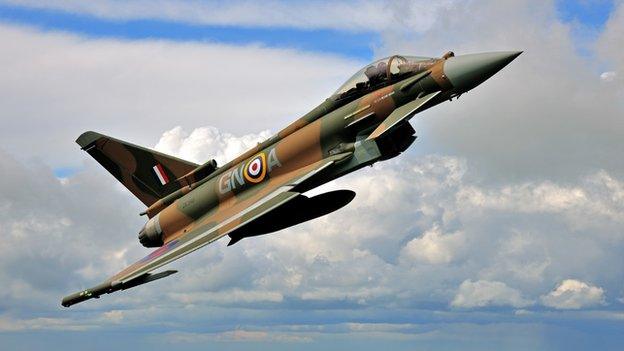Battle of Britain: Flypast for 75th anniversary of 'Hardest Day'
- Published
The WW2 aircraft took off from Biggin Hill one after the other before getting into formation
Aircraft including 18 Spitfires and six Hurricanes have flown over south-east England to mark 75 years since the Battle of Britain's "Hardest Day".
The event recalled 18 August 1940, when Bromley's Biggin Hill and other South East military bases came under attack from the German Luftwaffe.
It became known as the "hardest day" as both sides recorded their greatest loss of aircraft during the battle.
The Battle of Britain lasted throughout the summer of 1940.
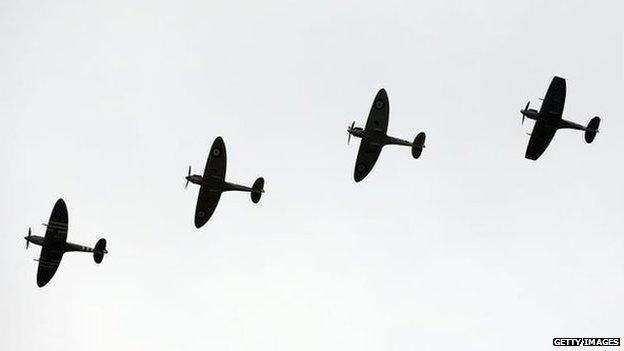
The special commemoration honoured the pilots engaged in the 1940 battle
Organiser Colin Hitchin: "We need to hear those Merlin engines roaring"

The day was marked with three flight formations
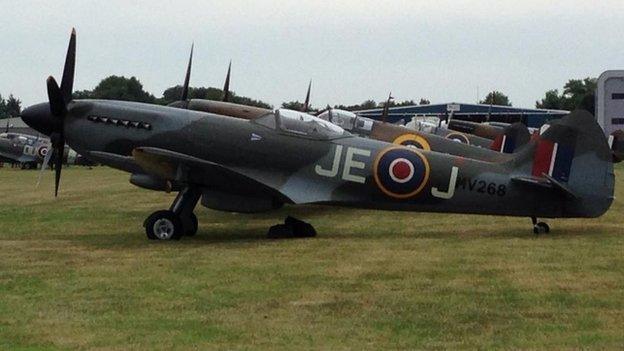
Crowds of more than 3,000 people flocked to the airport to see the aircraft
It was the first major campaign fought entirely in the air.

BBC reporter Clark Ainsworth at Biggin Hill
What a sight. Watching those iconic World War Two aircraft take to the skies above Biggin Hill was something to behold. Spectators gasped as they then circled the airfield in formation.
The roar of the Merlin engines and the grace with which the Hurricane and especially the Spitfires, climb, bank, dive and weave through the air is a joy to behold.
All the aircraft have now landed with spectators invited to see them up close and take pictures.
And although they are beautiful to look at on the ground, it is in the sky where they truly shine.

The Luftwaffe flew 850 sorties, involving 2,200 aircrew, while the RAF resisted with 927 sorties, involving 600 aircrew. The RAF and German Air Force lost 136 aircraft in one day.
The special commemoration, staged from the former RAF airfield at Biggin Hill, now a commercial airport, honours the pilots, engineers, armourers, operations staff and ground crews who faced attack that day.
BBC iWonder - Why do we love the Spitfire?
More than 3,000 spectators went to Biggin Hill to see the aircraft including squadron leader Tony Pickering who flew on the "Hardest Day".
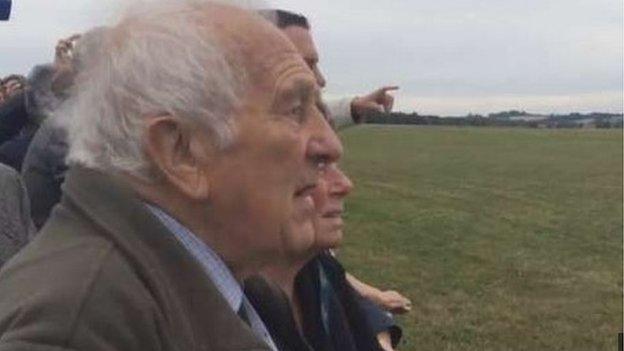
Tony Pickering said he always thought about the people in the factories who made the aircraft
He said: "I don't think I was ever afraid. You've got to make sure you don't get too enthusiastic. You couldn't take on the German air force by yourself.
"It's lovely to see these aircraft. Beautifully designed aircraft and there's no doubt about it. The people who made them... they did a good job."
Will Curtis, managing director of Biggin Hill Airport, said it was remarkable that the Spitfire was "still a joy to fly", adding that "real credit" goes to its designer RJ Mitchell.
He said: "It is as finely tuned and as well-balanced, if not better balanced, than a modern aircraft."
The day was marked with three flight formations, which took off from the airport at 13:00 BST:
Grice flight: Eight aircraft will head south and west to fly over Surrey and West Sussex to the Solent, Isle of Wight, Portsmouth and return via Dunsfold
Mortimer flight: Eight aircraft will head over Eynsford, Chelsfield, Detling, Farningham, Downe and RAF Kenley
Hamlyn flight: Eight aircraft will fly over Sevenoaks, Yalding, Ashford and the former RAF Hawkinge, with a special salute over the Battle of Britain Memorial at Capel-Le-Ferne on the white cliffs of Dover
On 10 July, aircraft including Hurricanes and Typhoons took part in a flypast over Buckingham Palace as part of the 75th anniversary.
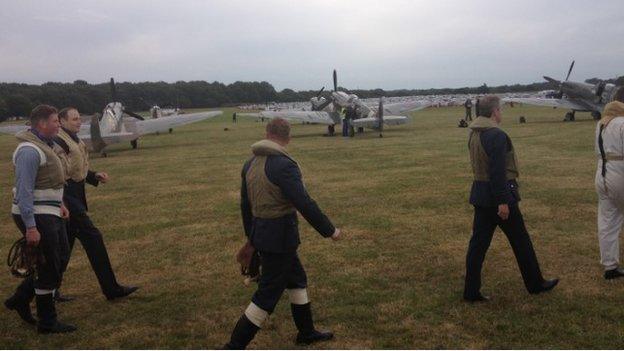
Men in period costume re-enacting a fighter pilot scramble at Biggin Hill Airport
- Published18 August 2015
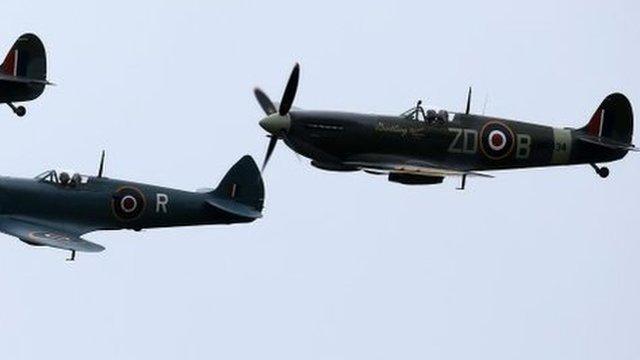
- Published18 August 2015
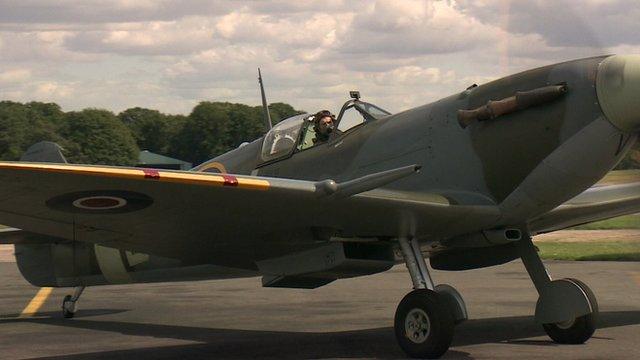
- Published10 July 2015
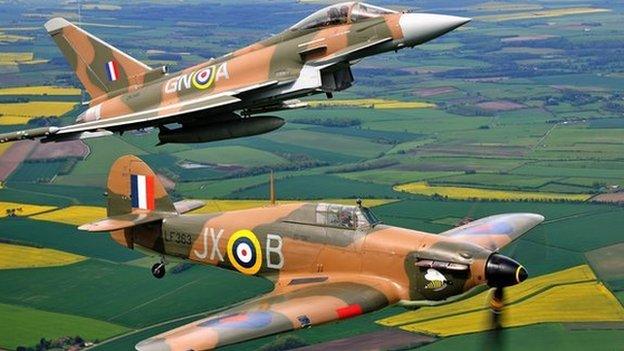
- Published10 July 2015
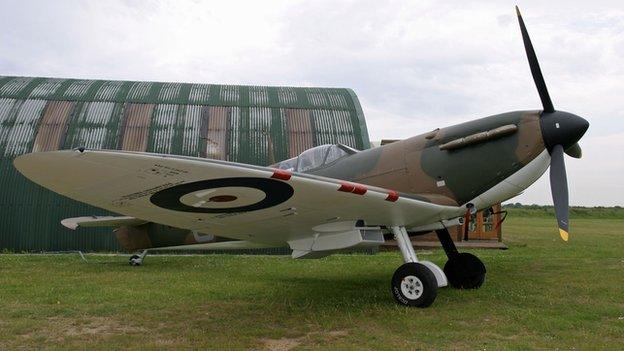
- Published4 July 2015
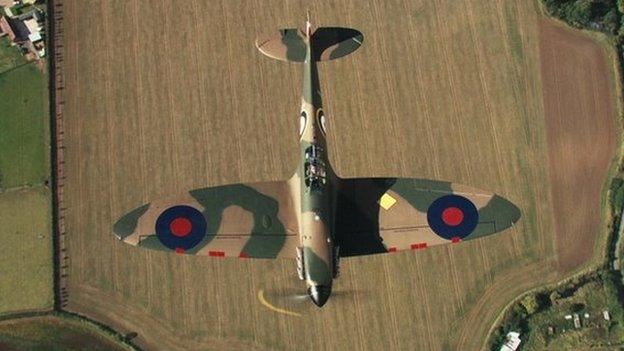
- Published3 July 2015
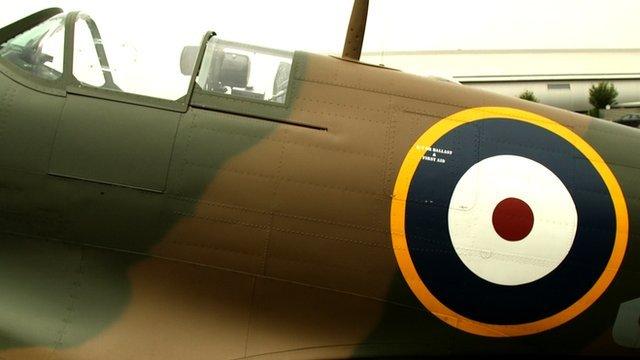
- Published3 July 2015
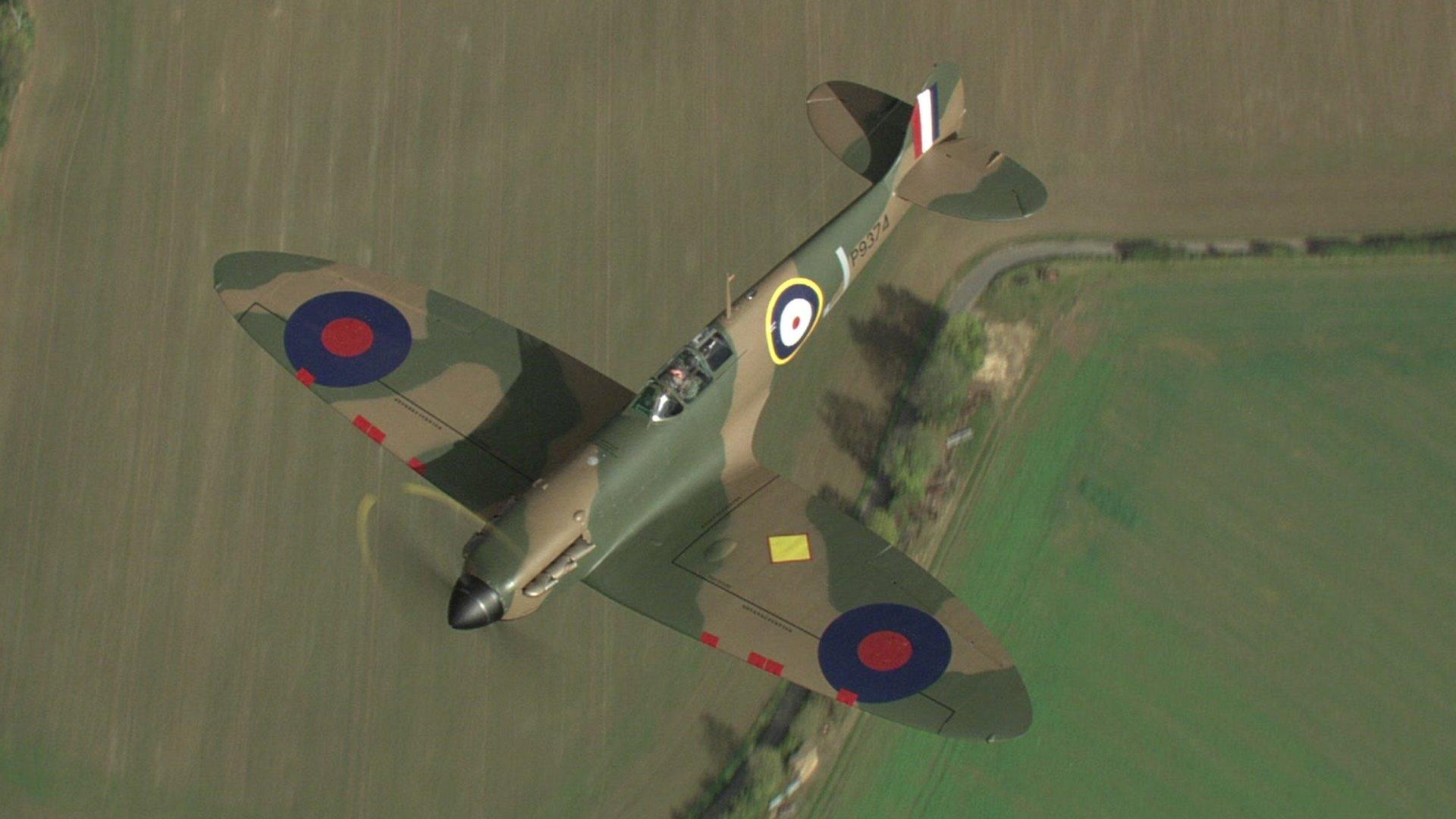
- Published21 May 2015
